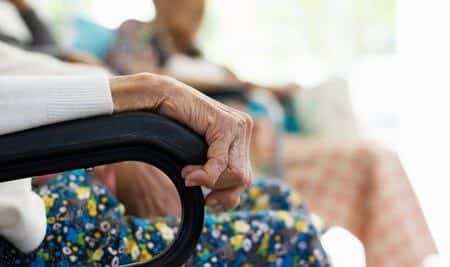This case involves an 83-year-old male patient who had been a resident of an assisted facility for a year following a stroke incident that left him paralyzed on one side of his body. The patient was confined to a wheelchair and required a home assistant at all times. One evening, after the patient had been put into his bed, he attempted to adjust himself in bed and fell out of the bed. The home assistant who was supposed to be attending to the patient had left the room and did not find the patient for several minutes. When he was found, the facility staff transported him to the hospital. As a result of the incident, the patient sustained a brain bleed and expired soon thereafter. The facility waited three days after the incident to inform the family that the patient had passed away.
Question(s) For Expert Witness
"1. Please explain your experience working in an administrative role at an assisted living facility
2. What safeguards are available to prevent falls out of bed in a patient with one-sided weakness? such as the one described in this case.
3. Briefly, what kind of measures should be taken as part of the post-fall protocol in a similar situation?
4. Have you ever reviewed a similar case? If yes, please elaborate
5. Have you ever been sued or arrested? If yes, please explain"
Expert Witness Response E-010573
"I have been in the health care field since 1977. I have been a Nursing Home Administrator in 4 different states. I have also been the Executive of several Independent, Assisted Living and Memory Care Communities I have been the administrator of both Assisted Living facilities as well as skilled nursing homes. In this case it sounds like the woman sustained her injuries in an Assisted Living facility although in the explanation of the case it also mentions nursing home.
Regardless of the level of care, bed rails are not used anymore since they are considered a restraint. I have had cases where a very thin resident slipped between mattress and the bed rail and choked to death and other cases where the resident climbed out of the bed using the side rail and was very seriously injured.
The standard of care for the last few years is that facilities provide high /low beds with no side rails. For a fall risk resident a ""landing mat"" can be placed next to the bed in the low position. Staff education is huge part of keeping a resident safe.
Another huge red flag is that the resident was transported by the nursing home. That is a huge liability issue for the facility. I have personally never worked in a place that would allow staff to transport a resident. When someone falls, the protocol is to take vital signs but do not move the resident. The facility must call 911 and the paramedics will assess the patient and transport the patient to the hospital ER. Moving the patient and transporting them could cause more damage until the assessment shows what is wrong.
The post-fall protocol would be to assess the room and make the necessary accomodations for the resident's condition and limitations. 1.e. low bed, landing mat, call light within reach, written protocols in place and staff education.
I have reviewed similar cases and I am very comfortable reviewing this case."
About the author
Wendy Ketner, M.D.
Dr. Wendy Ketner is a distinguished medical professional with a comprehensive background in surgery and medical research. Currently serving as the Senior Vice President of Medical Affairs at the Expert Institute, she plays a pivotal role in overseeing the organization's most important client relationships. Dr. Ketner's extensive surgical training was completed at Mount Sinai Beth Israel, where she gained hands-on experience in various general surgery procedures, including hernia repairs, cholecystectomies, appendectomies, mastectomies for breast cancer, breast reconstruction, surgical oncology, vascular surgery, and colorectal surgery. She also provided care in the surgical intensive care unit.
Her research interests have focused on post-mastectomy reconstruction and the surgical treatment of gastric cancer, including co-authoring a textbook chapter on the subject. Additionally, she has contributed to research on the percutaneous delivery of stem cells following myocardial infarction.
Dr. Ketner's educational background includes a Bachelor's degree from Yale University in Latin American Studies and a Doctor of Medicine (M.D.) from SUNY Downstate College of Medicine. Moreover, she is a member of the Board of Advisors for Opollo Technologies, a fintech healthcare AI company, contributing her medical expertise to enhance healthcare technology solutions. Her role at Expert Institute involves leveraging her medical knowledge to provide insights into legal cases, underscoring her unique blend of medical and legal acumen.



